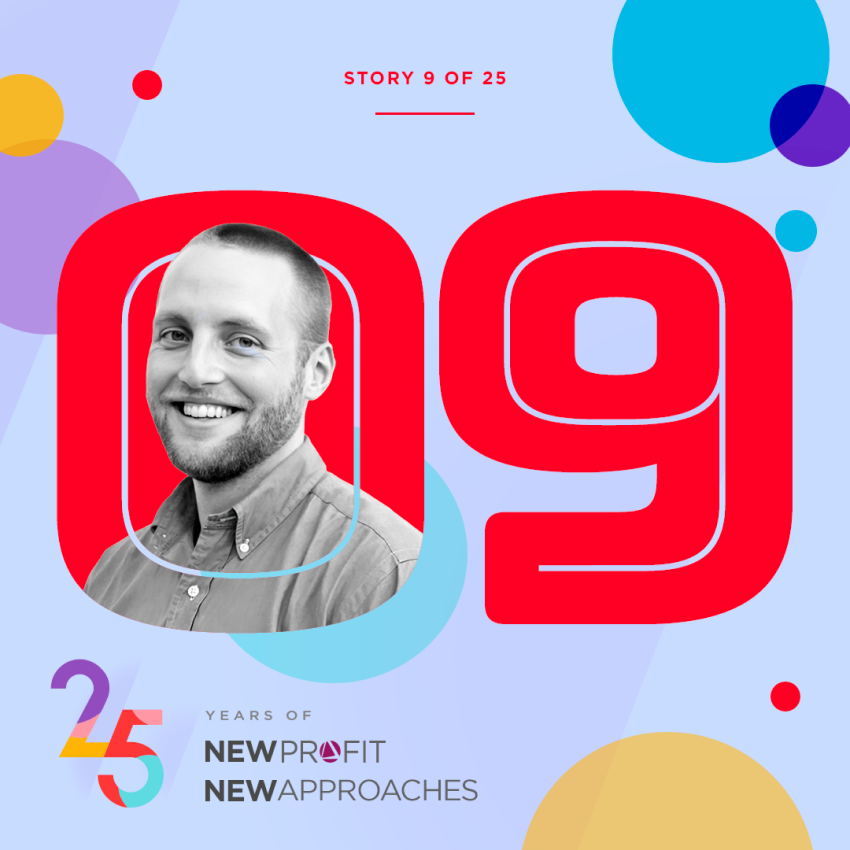The Challenge of Scaling
“One of the biggest challenges in scaling social innovations is distinguishing the innovation itself from the people delivering the innovation,” says Lance Potter, New Profit Director of Evaluation. “If you develop a successful program in Eastern Kentucky, it may not scale. If I take it to western Nevada or northern Minnesota, it may not work, because I don’t know anybody there.”
Lack of proximity is one of several challenges in scaling. The process of scaling has traditionally involved hiring a bigger team (i.e. bureaucracy), expanding marketing, and adapting approaches and technologies to reach a broader audience. Though this growth method can work, it can also lead to reduced efficacy because it’s focused on creating a “one size fits all” solution. Growth often comes with a fundamental tension between staying responsive to needs on the ground, versus simplifying your solution to the point where many other people can access and use it.
An alternative approach to address the problem of scaling local solutions is to develop a systems map, a powerful, human-centered tool that addresses the systemic forces that cause problems rather than focusing on their symptoms. Building a systems map takes time and it takes people. It relies on storytelling to learn and analyze how behaviors and beliefs are reinforced. A systems map allows for the identification of what Seth Saeugling, co-founder of the New Profit alumni organization Rural Opportunity Institute (ROI), calls “points of leverage.” These are places within systems that offer opportunities to make outsized impact from limited input.
Identifying points of leverage also requires focusing on assets— the strengths found in each unique community and its individuals. “There are no deficits in people,” Seth says. “There are no deficits in communities. But there are deficits in the systems that have been built around us.”
The key steps to creating a systems map are:
- Have conversations with community members with lived experience to understand the core challenges and assets in their neighborhoods.
- Create feedback loops that allow you to understand the forces and patterns upholding and creating an outcome.
- Brainstorm possible solutions to amplify the virtuous (positive) patterns in the system and disrupt the vicious (negative) patterns.
- Use the systems map to find points of leverage to test those solutions, leaving plenty of room to iterate and change course when needed.
Charting a Scalable Course
“The truest impact of a systems map,” Seth says, “is that it allows you to step back and see the patterns underneath that are creating an outcome. It’s like an iceberg, what you see on the surface is actually caused by a lot of unseen forces underneath the water’s surface. For example, we see present-day outcomes of lower academic performance and persistent health challenges. This leads to a whole host of downstream impacts on jobs, wealth, and generational poverty. But the deeper patterns identified by community members showed a pattern of punishment and isolation, in the face of trauma and hard things, that prevents healing and passes trauma through generations. The systems map allows us to collectively see a more accurate picture of what is going on. And it does so without pointing the finger of blame at one person or entity, but rather, helps us all see how we are individually participating in helpful and unhelpful ways towards creating a healthy community.”
“The map can reveal similarities between communities that can be passed on through less traditional growth paths, letting communities implement mapped solutions with fidelity and with customizations based on their understanding of their local environment.” Seth’s key insight here is that scalability relies on proximity. Every solution is unique to each place.
Vichi Jagannathan, ROI co-founder, reflects on how ROI’s participation in New Profit’s 2022 Health Equity Catalyze cohort helped advance their thinking. “New Profit provided tools, frameworks, and ideas that moved our work forward. They ask radically imaginative questions about how we can move towards justice, rethink philanthropy, redistribute wealth, and shift power. I’m excited by the ways that New Profit is thinking about these issues.”
Neighboring communities in eastern North Carolina have asked ROI for support to do similar systems mapping processes. Vichi and Seth want to share what is working and meet the demand, but they don’t want to build a large bureaucracy and team. “We want to build better tools to listen and understand, and then define insights and lift those up so other communities can take the knowledge and run with it,” Seth says. “My ideal is that Vichi and I are not in a leadership position. We organize ourselves out of the way and work ourselves out of a job.”
